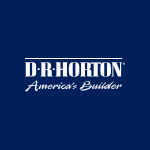D.R. Horton Q4 2021 Earnings Report
Key Takeaways
D.R. Horton reported a strong fourth quarter and fiscal year 2021, with net income per diluted share increasing 65% to $3.70 and consolidated revenues increasing 27% to $8.1 billion for the quarter. For the year, consolidated pre-tax income increased 80% to $5.4 billion on a 37% increase in revenues. The company closed a record 81,965 homes in fiscal 2021, marking its 20th consecutive year as the largest homebuilder in the United States.
Net income per diluted share increased 65% to $3.70 compared to the same quarter of fiscal 2020.
Net income attributable to D.R. Horton increased 62% to $1.3 billion compared to the same quarter of fiscal 2020.
Homebuilding revenue increased 24% to $7.6 billion from $6.2 billion in the same quarter of fiscal 2020.
Net sales orders decreased 33% to 15,949 homes and 17% in value to $6.0 billion compared to the same quarter of fiscal 2020.
Revenue by Segment
Forward Guidance
D.R. Horton provided initial guidance for fiscal year 2022, including consolidated revenues of $32.5 billion to $33.5 billion, homes closed between 90,000 and 92,000, and an income tax rate of approximately 24%.
Positive Outlook
- Consolidated revenues of $32.5 billion to $33.5 billion
- Homes closed between 90,000 homes and 92,000 homes
- Income tax rate of approximately 24%
- Strong positioning to produce double-digit volume growth in fiscal 2022
- Maximizing returns and capital efficiency in each of our communities while increasing our market share
Challenges Ahead
- Significant disruptions in our supply chain
- Shortages and delivery delays in certain building materials
- Tightness in the labor market
- Restricting our home sales pace by selling homes later in the construction cycle
Historical Earnings Impact
Analyze how earnings announcements historically affect stock price performance

